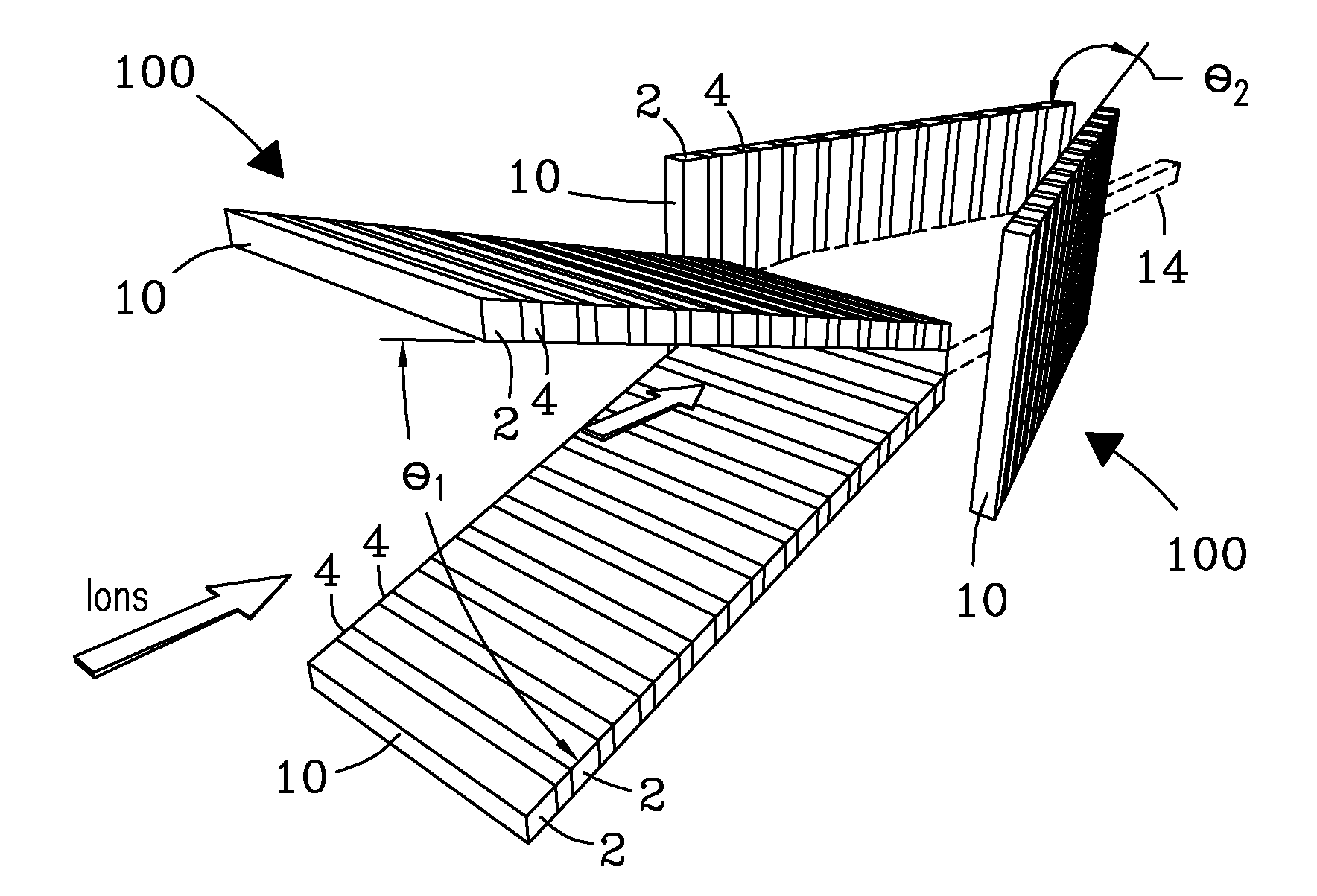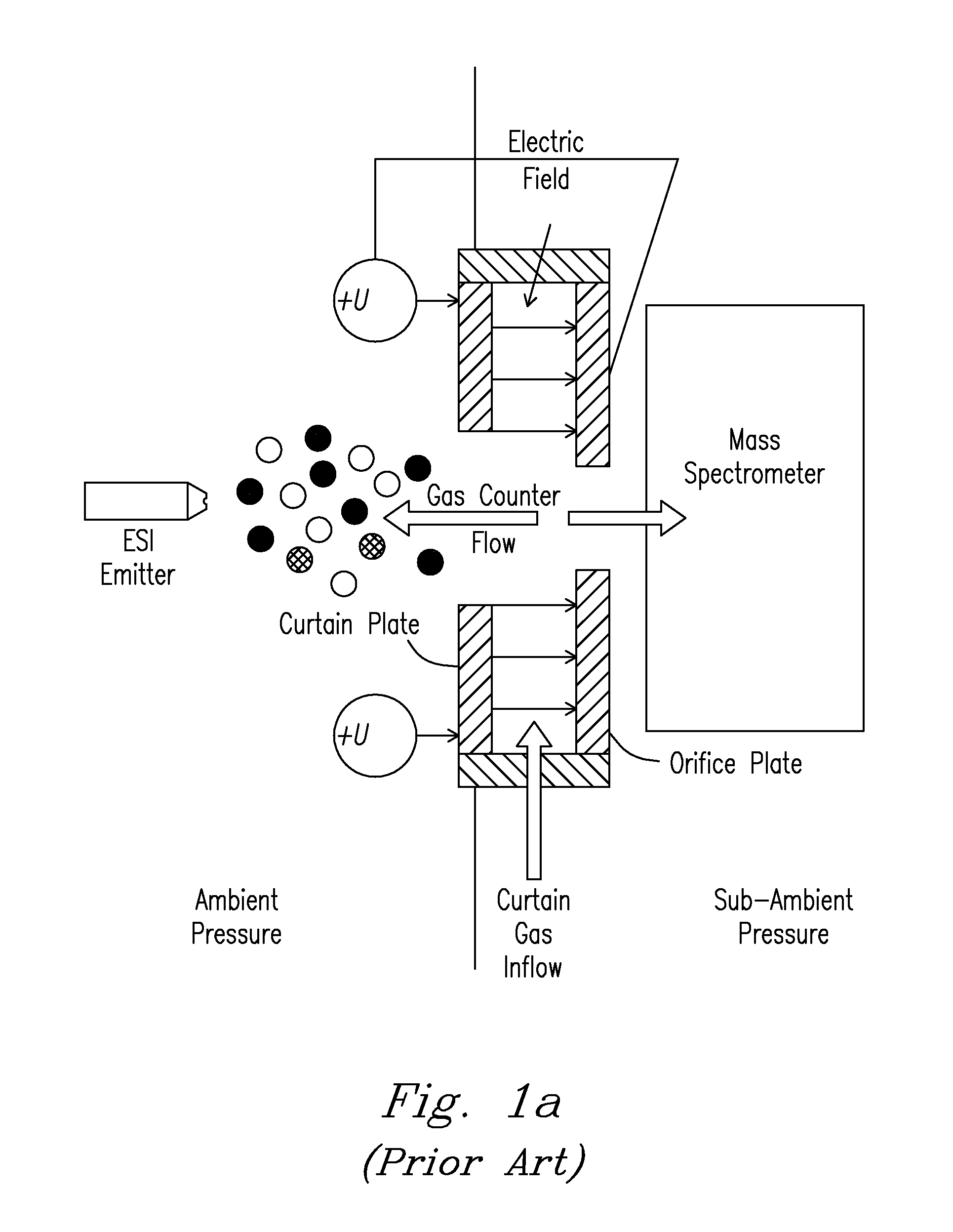Microchip and wedge ion funnels and planar ion beam analyzers using same
a funnel and microchip technology, applied in the field of system and method of focusing of ions, can solve the problems of ion transfer into the ms, major ion loss, and most real samples are sufficiently challenging, and achieve the effect of higher breakdown threshold
- Summary
- Abstract
- Description
- Claims
- Application Information
AI Technical Summary
Benefits of technology
Problems solved by technology
Method used
Image
Examples
Embodiment Construction
[0030]The invention provides effective RF ion focusing across the range of ion mass-to-charge ratios most relevant to proteomics and metabolomics (˜300-3,000) at P>0.1 atm. In particular, the pressure may range from 0.3 to 1 atm and even exceed 1 atm. Even P=0.3 atm allows ESI (in the form of SPIN sources) and IMS / MS to perform virtually as well as at ambient pressure.
[0031]As detailed herein, extensive characterization of 2nd-generation ion funnels has proven the theory that the maximum operating pressure scales with w and A. The underlying physics has no pressure limit and must equally apply up to P=1 atm and beyond. Then effective ion focusing at P=1 atm (or ˜25 times the present value of P=30 Torr) would require w˜50 MHz and, in the current funnel geometry, U=5 kV or A=100 kV / cm. Reaching those values would necessitate augmenting the electrical power output by 254=390,625 times, an impossible proposition from either the power consumption or heat release viewpoints. Also, the bre...
PUM
 Login to View More
Login to View More Abstract
Description
Claims
Application Information
 Login to View More
Login to View More - R&D
- Intellectual Property
- Life Sciences
- Materials
- Tech Scout
- Unparalleled Data Quality
- Higher Quality Content
- 60% Fewer Hallucinations
Browse by: Latest US Patents, China's latest patents, Technical Efficacy Thesaurus, Application Domain, Technology Topic, Popular Technical Reports.
© 2025 PatSnap. All rights reserved.Legal|Privacy policy|Modern Slavery Act Transparency Statement|Sitemap|About US| Contact US: help@patsnap.com



